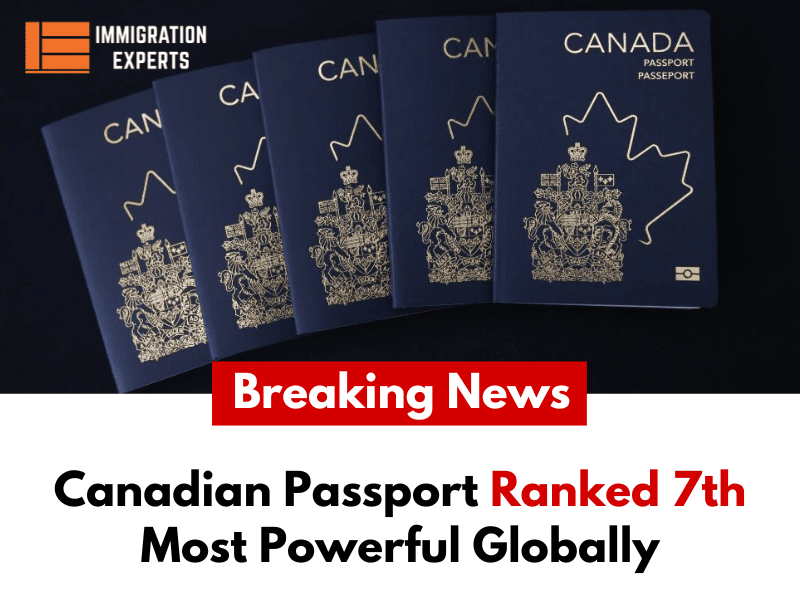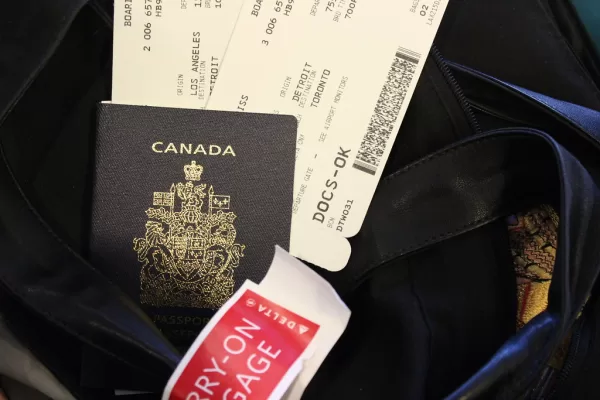051 8439995, 042 35911332

Henley and Partners, a residence and citizenship advisory firm, has published their 2024 world passport rankings using data from the International Air Transport Authority.
This year, they ranked the Canadian passport as the seventh most powerful globally, considering various factors like the number of countries it allows visa-free travel to. Canadian passport holders can travel to 187 countries without a visa and have additional work and study opportunities in many of these places. Many Canadians also benefit from holding dual citizenship, giving them access to two passports. The Canadian passport has held this position for the second year in a row, sharing the rank with the passports of Czechia, Hungary, and Malta.
Singapore retained the top position this year, offering visa-free travel to 195 countries. Five countries (France, Germany, Italy, Japan, and Spain) shared second place, each allowing visa-free access to 192 countries. The United States, the lowest-ranking G7 country, fell to eighth place, with visa-free travel to 186 countries. Afghanistan is placed at the bottom, offering visa-free access to just 26 countries.
Things You Will Find In This Page
The Resilient Strength of the Canadian Passport
The Canadian passport has consistently provided substantial benefits to its holders, as evidenced by Henley and Partners’ rankings over the years.
In 2014, Henley and Partners listed the Canadian passport as the second most powerful in their global mobility rankings. In nearly two decades of producing these rankings, the Canadian passport has never dropped below the top 10.
Steps to Getting a Canadian Passport
Step 1: Become a Citizen
To get a Canadian passport, you must first be a Canadian citizen. If you were not born in Canada, this usually means you need to become a permanent resident and fulfill the physical presence requirements for citizenship. You must have lived in Canada for at least three of the last five years, totaling around 1,095 days.

Note: If you are the direct child of a Canadian citizen who was a citizen at the time of your birth, you might be eligible for citizenship through your parent. Recent rules also extend this eligibility to some children of Canadians born abroad.
After gaining permanent residence and meeting the physical presence requirements, there are additional criteria you must meet to apply for Canadian citizenship:
- Tax Filing: You must file and pay any required taxes during your residency period.
- Citizenship Test: You need to pass the Canadian citizenship test.
- Language Proficiency: You must demonstrate that your language skills in English or French meet the Canadian Language Benchmark (CLB) level 4.
Typically, it takes at least three years to achieve Canadian citizenship through naturalization.
Step 2: Applying for a Canadian Passport
Once you have completed the citizenship ceremony and received your citizenship certificate, you can apply for a Canadian passport. All lawful Canadian citizens are eligible to apply, though certain conditions such as misrepresentation on your citizenship application, security concerns, human rights violations, or ties to organized crime can lead to ineligibility.
The application process requires the following documents:
- Proof of Canadian citizenship (e.g., citizenship certificate or Canadian birth certificate)
- Any current Canadian passport or travel document issued in your name
- Two references supporting your passport application
- A document confirming your identity
- Two identical passport-size photographs
- For first-time applicants, you will also need a guarantor. The guarantor must meet specific criteria, which vary depending on the type of passport and application location.
New citizens can apply for a passport online or at a Service Canada center, either by appointment or through walk-in service.
